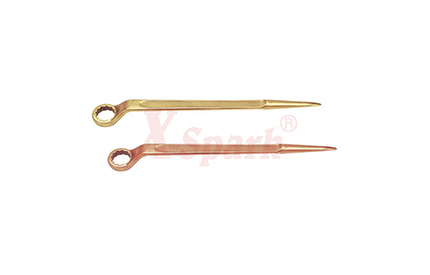Pipe Wrench supplier shares this article for you.
1. Be good at applying combustion theory to guide daily fire prevention work.
When combustion occurs, there must be a certain amount of combustibles, a certain temperature, that is, ignition energy and a certain amount of combustion-supporting substances, namely air and oxidizer, and the three must interact. The combination of daily fire protection measures is to prevent the conditions that cause combustion from coexisting, especially to avoid their interaction. For example, when oil terminals, oil storage areas, and oil tankers are in normal production and operation, the safety management and monitoring of equipment, processes, and operations must first be strictly controlled to prevent oil from running, spilling, dripping and leaking, strengthening the recovery of volatile oil and gas, and minimizing oil and gas The production and accumulation in the production site keep the oil and gas content of the production site at a safe value. At the same time, strict management, strict systems, and strict measures are required to avoid various ignition sources such as friction and impact sparks, hot high temperatures, electrostatic discharge, electrical short circuits, and lightning strikes. It is necessary to use power and thermal energy to make it in a safe and controllable state. When oil pipelines, oil tanks, and cargo oil tanks need to be overhauled and fired, it is necessary to strengthen the cleaning and cleaning of equipment, containers, and cabins before the fire, the thorough removal of flammable and explosive gases, and strict explosion detection to confirm and maintain their safety status. On the other hand, strictly manage the whole process of open flame operation, so that the entire open flame operation is always in a safe and controllable state. In order to reduce the formation and accumulation of explosive mixtures in oil pipelines, oil tanks, and oil tanks, their existence is limited, and space can be replaced and stored with inert gas.

Non Sparking Tools
2. Is the "non-sparking tool" absolutely safe?
The so-called "Non Sparking Tools" are actually tools made of copper or other non-ferrous metals, such as wrenches, hammers, and crowbars. In practice, it was found that such tools are not absolutely reliable. The reason is that the hardness of this kind of tool metal is low, and it is easy to embed iron filings, cement, grit, and other impurities during use. If it is used carelessly, it is also prone to sparks. If it is embedded with aluminum debris, it will be more dangerous. "Non-spark tools" can easily cause people to have a false sense of security and reduce or even lose fire protection vigilance, resulting in barbaric operations. Fire safety. Under no circumstances should you relax your vigilance, take precautions first, and pay attention to preventing the slightest failure. Even with "non-sparking tools", because they are working in places with high fire hazards such as oil terminals, tank farms, and oil tankers, they must be highly vigilant and cautious. To prevent "just in case", apply a proper amount of butter or damp the contact parts of the tool and the equipment when using it. After the tool is used, it must be thoroughly cleaned to remove the dangerous embedded impurities in time, and use rubber, canvas, plastic, and other non-productive materials. Stored in metal containers.
3. How to fight CS2 fire?
CS is a light yellow or colorless, transparent, and toxic flammable liquid. CS2 is very volatile, and when mixed with air to a certain amount, it will burn and explode when exposed to open flames or other ignition sources. Its boiling point is the only 46.5C, the flashpoint is -30C, and its outstanding feature is that it is heavier than water, and the specific gravity of CS2 is 1.261. According to this feature, when CS2 catches fire, the first thing is to calm down and deal with it correctly. Spray water quickly to the burning area. Since the water will not sink, the floating cover will be on the liquid surface of CS2 to isolate it from the air. Open, the fire will go out. When spraying fire extinguishing, the water pressure should be controlled well to prevent the spread of combustion due to the CS2 being washed out of the container by high-pressure water. When conditions permit, CS should be placed upside down in other safe containers, but it must be strictly avoided from spilling and contact with air.
Previous: How to Use Diagonal Pliers?